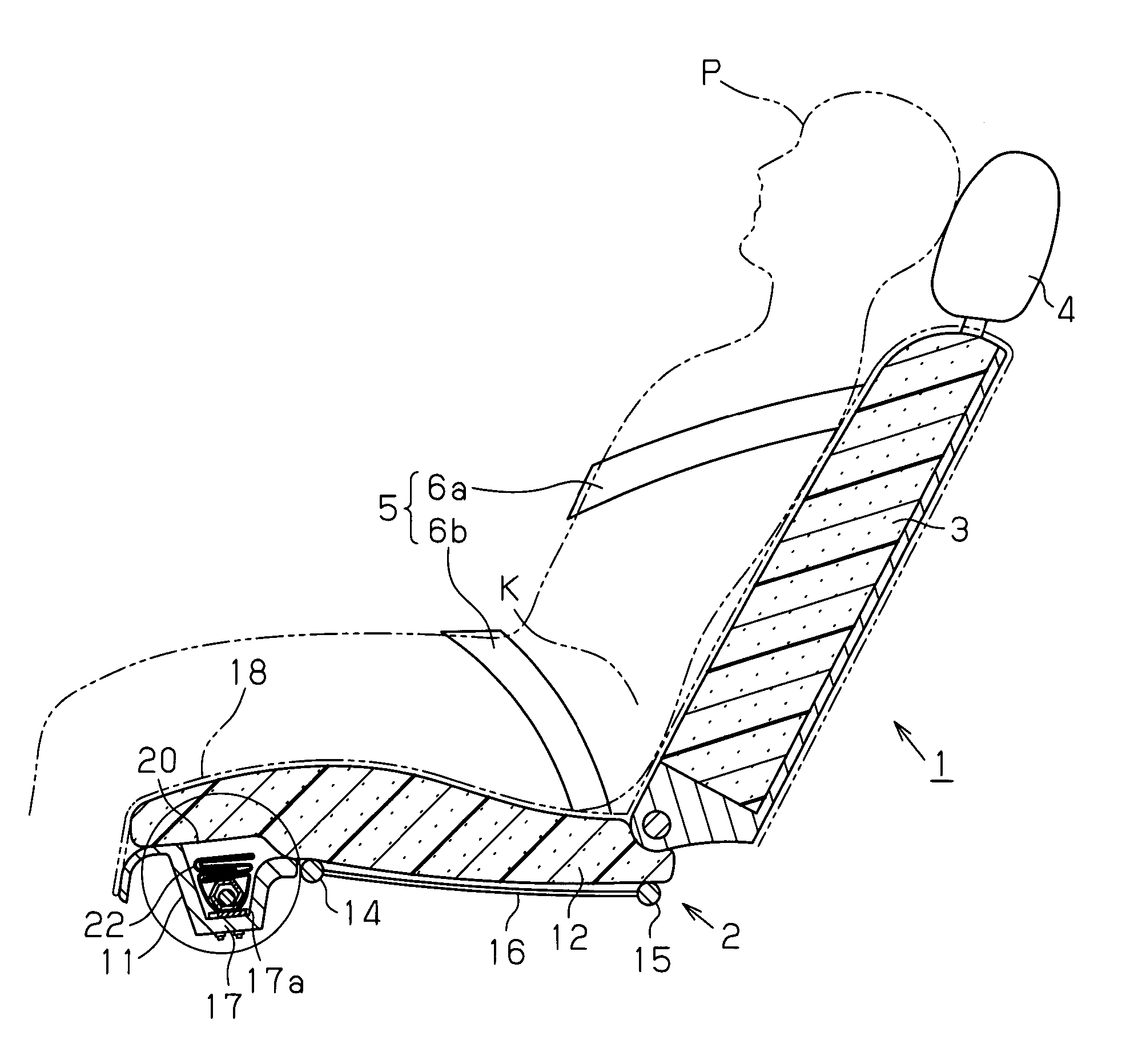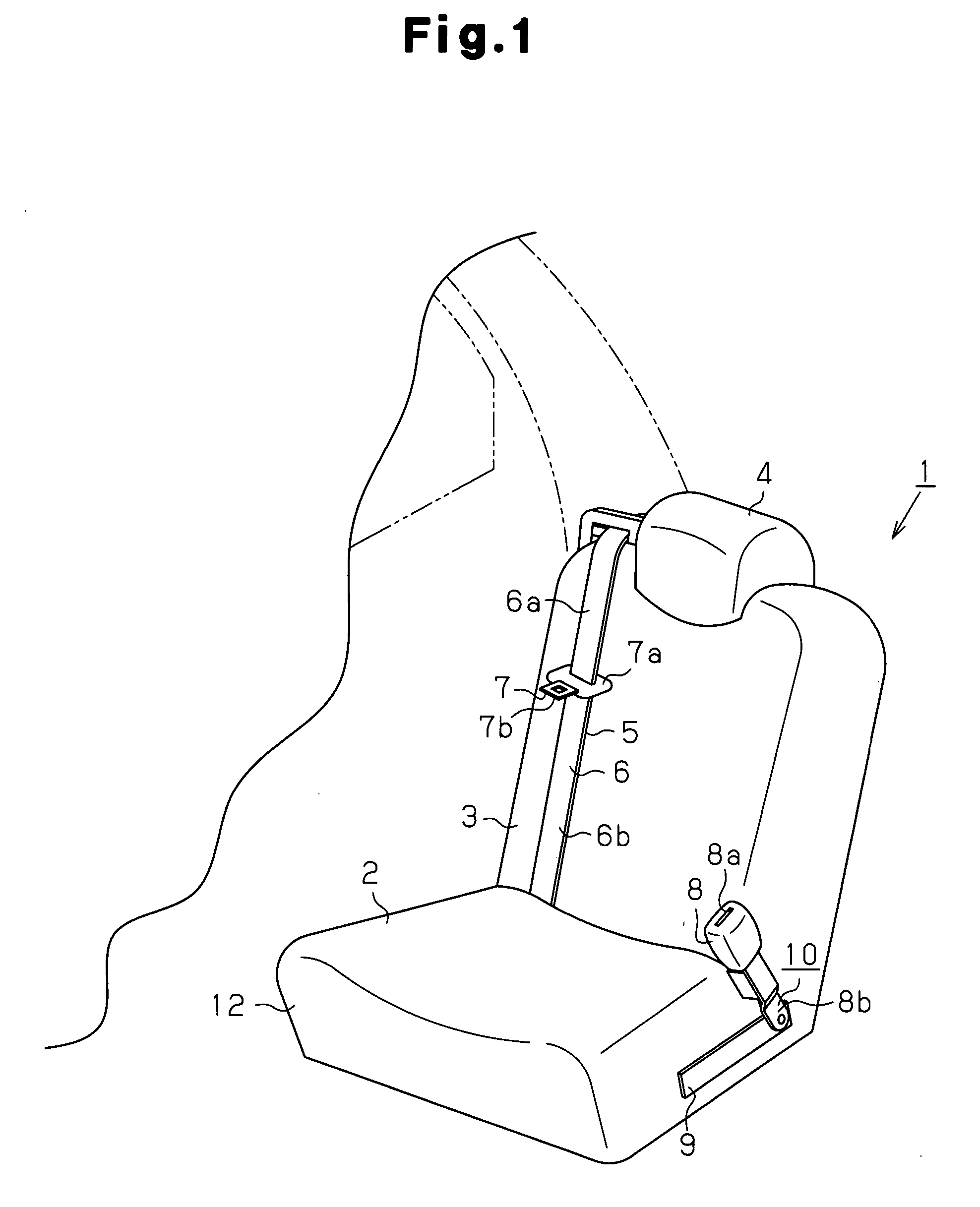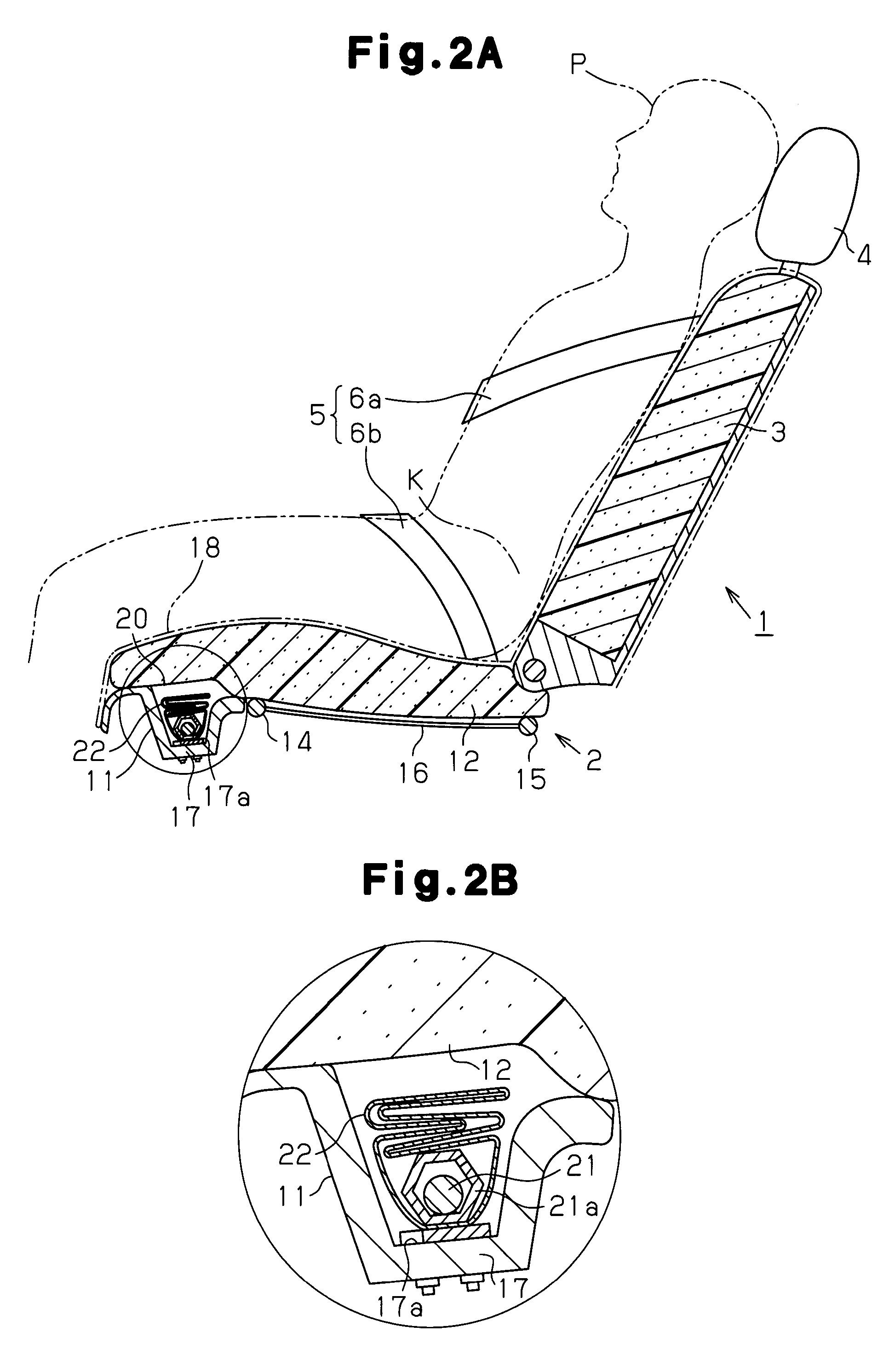Occupant protection apparatus and method
a technology for protecting occupants and vehicles, applied in vehicle components, pedestrian/occupant safety arrangements, vehicle arrangements, etc., to achieve the effect of inhibiting the inflation of airbags
- Summary
- Abstract
- Description
- Claims
- Application Information
AI Technical Summary
Benefits of technology
Problems solved by technology
Method used
Image
Examples
first embodiment
[0020] A first embodiment of the present invention will now be described with reference to FIGS. 1 to 5. In the following, the traveling direction of the vehicle is defined as a forward direction. With reference to the forward direction, front and rear, up and down, and left and right directions are defined. Regarding a vehicle seat, front and rear, up and down, and left and right directions are defined with reference to a state in which the seat is installed in the vehicle.
[0021] A vehicle seat 1 is located in a passenger compartment of a vehicle (not shown). As shown in FIGS. 1 and 2A, the seat 1 includes a seat portion 2 supporting the buttocks and thighs of the occupant P seated on the seat 1, a reclining backrest portion 3, a headrest 4 for supporting the head of the seated occupant P, and a seat belt 5.
[0022] The seat belt 5 is a three-point seat belt and functions as a restrainer (restraining means) that restrains the occupant P seated on the seat 1 to the seat 1. Specifica...
second embodiment
[0037] A second embodiment of the present invention will now be described. Like or the same reference numerals are given to those components that are like or the same as the corresponding components of the first embodiment, and detailed explanations and drawings are omitted or simplified.
[0038] In the second embodiment, the airbag apparatus 20 includes a weight sensor 30 instead of the contact sensor 24 as shown in FIG. 6. The weight sensor 30 senses whether the weight on the seat 1 is not less than a predetermined value. The weight sensor 30 is connected to the ECU 25, and sends a sensing signal when sensing that the weight on the seat 1 is equal to or more than the predetermined value. The predetermined value is set to a value that enables the ECU 25 to determine whether the object on the seat is an article or a relatively light weighted occupant, and may be set to 20 kg.
[0039] When receiving a collision signal from the collision detection sensor 23, the ECU 25 determines whethe...
third embodiment
[0043] A third embodiment of the present invention will now be described. Like or the same reference numerals are given to those components that are like or the same as the corresponding components of the first embodiment, and detailed explanations and drawings are omitted or simplified.
[0044] In the third embodiment, the airbag apparatus 20 includes a weight sensor 30 in addition to the contact sensor 24 as shown in FIG. 7. The weight sensor 30 senses whether the weight on the seat 1 is not less than a predetermined value. The weight sensor 30 is connected to the ECU 25, and sends a sensing signal when sensing that the weight on the seat 1 is equal to or more than the predetermined value. The predetermined value is set to a value that enables the ECU 25 to determine whether the object on the seat is an article or a relatively light weighted occupant, and may be set to 20 kg.
[0045] When receiving a collision signal from the collision detection sensor 23, the ECU 25 determines whet...
PUM
 Login to View More
Login to View More Abstract
Description
Claims
Application Information
 Login to View More
Login to View More - R&D
- Intellectual Property
- Life Sciences
- Materials
- Tech Scout
- Unparalleled Data Quality
- Higher Quality Content
- 60% Fewer Hallucinations
Browse by: Latest US Patents, China's latest patents, Technical Efficacy Thesaurus, Application Domain, Technology Topic, Popular Technical Reports.
© 2025 PatSnap. All rights reserved.Legal|Privacy policy|Modern Slavery Act Transparency Statement|Sitemap|About US| Contact US: help@patsnap.com



